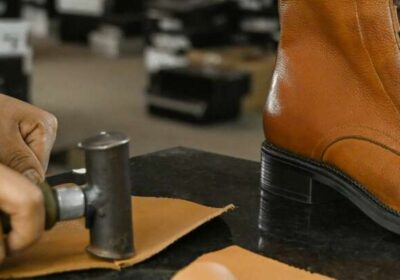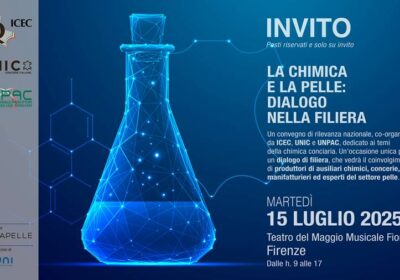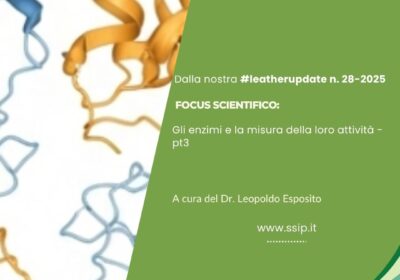
Il convegno: la SSIP all’evento “LA CHIMICA E LA PELLE: DIALOGO NELLA FILIERA”
La Stazione Sperimentale per l'Industria delle Pelli ha preso parte a Firenze, all'evento “LA CHIMICA E LA PELLE: DIALOGO NELLA FILIERA”, che…

Progetto Solaris – MICS, dottoranda del team torinese premiata al 20° Convegno Europeo sui Materiali Polimerici Ritardanti di Fiamma (FRPM25)
Lorenza Abbà, dottoranda del Politecnico di Torino, afferente al gruppo di ricerca dei prof. Alberto…

RIVISTA – World Leather // Giugno-Luglio 2025
E' stato pubblicato il nuovo numero del magazine inglese "World Leather", fondato nel 1987, che…

Leather Update n. 28-2025
Approfondimenti sulle attività di ricerca, formazione e ogni altra notizia rilevante per la filiera pelle.…

REPORT WEBINAR Metodi chemiometrici e spettroscopia NIR per il controllo della produzione conciaria
Durante il webinar è stato approfondito il potenziale della spettroscopia nel vicino infrarosso (NIR), integrata…

REPORT WEBINAR Metodi chemiometrici e spettroscopia NIR per il controllo della produzione conciaria
Durante il webinar è stato approfondito il potenziale della spettroscopia nel vicino infrarosso (NIR), integrata…

RIVISTA – International Leather Maker – ISSUE 72 LUGLIO – AGOSTO 2025
International Leather Maker è una pubblicazione di informazioni provenienti dal mondo del cuoio e delle…

L’EVENTO – LA SSIP TRA I RELATORI DE “LA CHIMICA E LA PELLE: DIALOGO NELLA FILIERA”
Ci sarà anche la Stazione Sperimentale per l’Industria delle Pelli tra i relatori dell’evento “LA…

FOCUS SCIENTIFICO – GLI ENZIMI E LA MISURA DELLA LORO ATTIVITÀ
Gli enzimi e la loro classificazioneGli enzimi sono macromolecole che fungono da catalizzatori: accelerano, senza…

L’EVENTO – LA SSIP TRA I RELATORI DE “LA CHIMICA E LA PELLE: DIALOGO NELLA FILIERA”
Ci sarà anche la Stazione Sperimentale per l'Industria delle Pelli tra i relatori dell'evento "LA…
